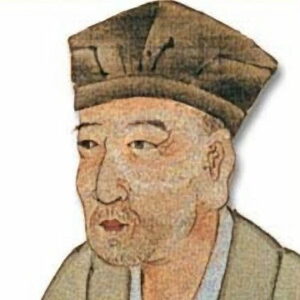Matsuo Basho was a Japanese poet of the 17th century regarded as the best master of haiku, a very brief form of poetry. The most renowned poet of the Edo period in Japan, he was highly regarded during his lifetime, and his reputation grew exponentially in the centuries after his death. His father was thought to have been a low-ranking samurai, and Basho began working as a servant at a young age to support himself. His teacher Td Yoshitada cherished poetry, and in his presence, Basho developed a taste for this literary genre. Eventually, he learned poetry from Kigin, a notable Kyoto poet, and was introduced to Taoist principles that had a profound effect on him. He began producing poems that earned widespread acclaim in literary circles and established him as a gifted poet. He achieved renown as a master of haiku due to his brevity and clarity in speech. He was a successful teacher by profession, but this did not provide him satisfaction. Despite being invited into renowned literary circles in Japan, he rejected the social life and toured the country in search of writing inspiration. Even though he never felt at peace with himself and was perpetually in the throes of mental conflict, he acquired widespread fame during his lifetime.
Youth and Early Life
Matsuo Basho was born around 1644 in Iga Province near Ueno. Almost certainly, his father was a lesser samurai. Many of Matsuo Basho’s siblings became farmers in later years.
He began working when he was a little child. One of his earliest jobs was as Todo Yoshitada’s servant. His master had a passion for poetry, and upon discovering that Basho shared this passion, he encouraged the boy’s literary pursuits.
Basho’s first surviving poem was published in 1662, and his first collection of hokku appeared two years later.
In 1665, he and Yoshitada created a hyakuin, or a hundred-verse renku, in conjunction with a number of friends.
Yoshitada’s unexpected death in 1666 ended Basho’s quiet life as a servant. Now he had to seek out alternative means of subsistence. Since his father was a petty samurai, Basho could have followed in his footsteps, but he opted not to.
A Final Years
Even though he was uncertain as to whether he wished to become a full-time poet, he continued to produce poems in anthologies until the late 1660s.
In 1672, he published The Seashell Game, a collection of his own writings and those of other authors of the Teitoku school. Soon after gaining a reputation as a good poet, his poetry became renowned for its straightforward and genuine manner.
Nishiyama Sin, the founder and head of the Danrin school of haikai, arrived in Edo from Osaka in 1675. He invited numerous poets to compose with him, including Basho.
By 1680, Basho had become a teacher and had 20 disciples. His students held him in high regard and constructed a crude cottage for him, giving him his first permanent residence.
His hut was destroyed by fire in 1682, and his mother passed away the following year. This deeply troubled Basho, so he resolved to embark on a trip to find serenity.
Despondent, he traveled alone on perilous roads with the expectation of dying on the journey. However, as his journey went on, his mood improved, and he learned to appreciate his travels and the new experiences they provided. As he wrote about his impressions of the world, his poetry took on an intriguing tone, which was greatly influenced by his travels.
In 1685, he returned home and resumed his position as a poetry instructor. The following year, he wrote a haiku about a frog leaping into the water. This poem is one of his most well-known works of literature.
In 1689, he set off again, this time with his student and apprentice Kawai Sora. They initially traveled to Hiraizumi in the north, then went to the western edge of the island, and finally trekked gently back. His travel journal was edited and published in 1694 under the title ‘Oku no Hosomichi’.
Basho’s Major Effort
“The Narrow Road to the Deep North” (Oku no Hosomichi) is regarded as his magnum opus. It is a significant haibun work and is regarded as “one of the most important works of classical Japanese literature.” The influence of Du Fu, whom Matsuo Basho held in the highest regard, may be seen in the lyrical work’s significance in Japan.
Personal History and Legacy
Matsuo Basho eschewed the ostentation of urban social life in favor of simple, austere existence. Despite his accomplishments as a poet and educator, he was never at peace with himself and avoided the company of others. Nonetheless, he became more gregarious as he aged.
In his later years, he shared a residence with his recovering nephew and his female friend, Jutei.
At the conclusion of his life, he had a stomach disease and died on November 28, 1694, surrounded by his disciples.
Estimated Net Worth
Steffen Basho-Junghans is one of the wealthiest and most prominent Songwriters. According to our research, Wikipedia, Forbes, and Business Insider, Steffen Basho-Junghans has an estimated net worth of $1.5 million.


